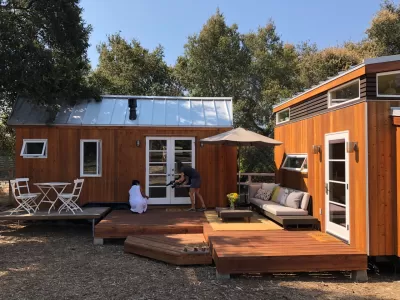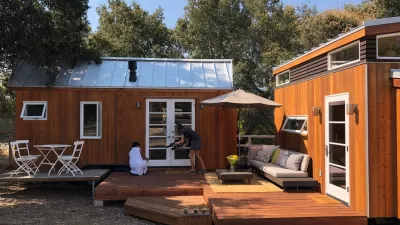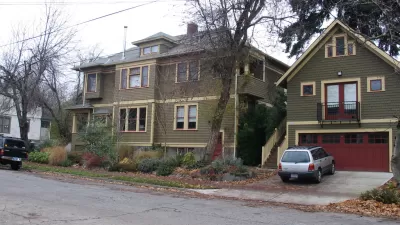Legal barriers to accessory dwelling units may be disappearing in some places, but costs can still be prohibitive. Several companies are stepping forward with more affordable options.

In Seattle and elsewhere in the Pacific Northwest, ADU reform is moving forward at a decent clip. However, Natalie Bicknell writes, "adding a new dwelling unit, particularly if it is a detached accessory dwelling unit or DADU, is still an expensive and onerous process that can present insurmountable hurdles for many property owners."
Bicknell goes on, "An interesting fact about backyard cottages is that while they do tend to eventually rent for rates that are either at or below market value, in terms of square footage, backyard cottages are often the expensive type of housing to construct per square foot."
Why are DADUs so expensive? Because size often matters less than costs related to design, utility connection, construction, and permitting, which can drive prices into unworkable territory.
Bicknell goes on to discuss several Seattle-area companies offering to take care of those issues for potential ADU owners. According to one founder, several other tactics help reduce costs, including standardizing structures' corners and using raised foundations.
FULL STORY: In Pursuit of the Affordable Backyard Cottage

Trump Administration Could Effectively End Housing Voucher Program
Federal officials are eyeing major cuts to the Section 8 program that helps millions of low-income households pay rent.

Planetizen Federal Action Tracker
A weekly monitor of how Trump’s orders and actions are impacting planners and planning in America.

Ken Jennings Launches Transit Web Series
The Jeopardy champ wants you to ride public transit.

Washington Legislature Passes Rent Increase Cap
A bill that caps rent increases at 7 percent plus inflation is headed to the governor’s desk.

From Planning to Action: How LA County Is Rethinking Climate Resilience
Chief Sustainability Officer Rita Kampalath outlines the County’s shift from planning to implementation in its climate resilience efforts, emphasizing cross-departmental coordination, updated recovery strategies, and the need for flexible funding.

New Mexico Aging Department Commits to Helping Seniors Age ‘In Place’ and ‘Autonomously’ in New Draft Plan
As New Mexico’s population of seniors continues to grow, the state’s aging department is proposing expanded initiatives to help seniors maintain their autonomy while also supporting family caregivers.
Urban Design for Planners 1: Software Tools
This six-course series explores essential urban design concepts using open source software and equips planners with the tools they need to participate fully in the urban design process.
Planning for Universal Design
Learn the tools for implementing Universal Design in planning regulations.
Heyer Gruel & Associates PA
Ada County Highway District
Institute for Housing and Urban Development Studies (IHS)
City of Grandview
Harvard GSD Executive Education
Toledo-Lucas County Plan Commissions
Salt Lake City
NYU Wagner Graduate School of Public Service




























